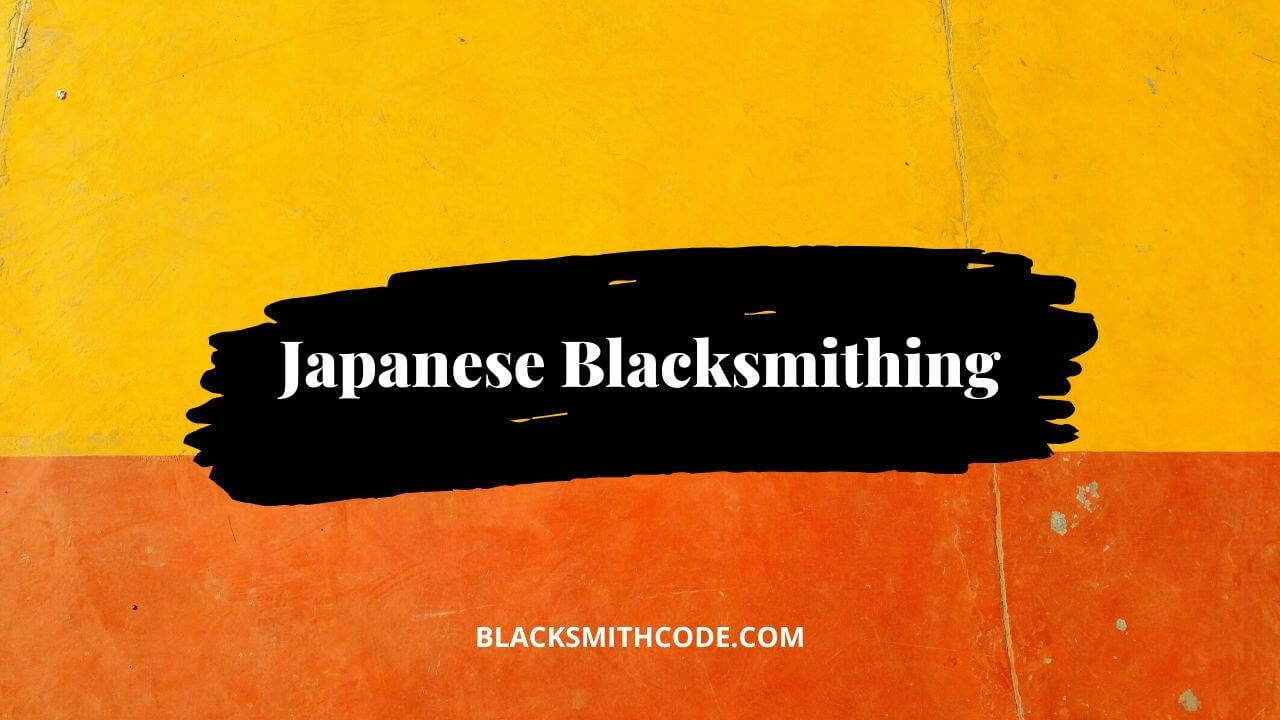Blacksmithing all over the world is almost the same, but Japanese blacksmithing is renowned for its sword making. The all famous katanas are an example of how brilliant japanese blacksmithing is.
These famous samurai swords were indeed a blacksmithing marvel. Tachi, yari, and nagamaki are also some products of Japanese blacksmithing.
Japanese blacksmiths have been making swords for thousands of years, and the process is similar even today. A lot of work goes into making a sword that is worthy of the title of the sharpest in the world.
Following is how Japanese blacksmithing is done:
Steel Production
For most tools, iron is not sufficiently strong enough. So, they use steel. Similarly, for swords, steel is used. The iron ore and carbon are heated up to 2500 degrees in a traditional oven and then combined to create steel.
Different types of steel are used to make a sword with different properties. The level of carbon in the steel determines its features, so the blacksmiths have to be careful.
Construction
The construction varies from sword to sword. Some swords contain multiple layers of steel, and some include iron with different levels of carbon content. New sword blacksmithing uses machining to mimic the traditional Japanese style sword making.
The contemporary blade doesn’t possess the same amount of resilience and sharpness as the conventional blade.
Forging
Traditionally, the core of the blade was made with a low carbon content steel, and the exterior of the module contained high carbon steel like pig iron or cast iron. They were made in a unique way that involved days of work.
Some blacksmiths in japanese blacksmithing even used to fold the metal to make it more robust (jihada). Patterns become apparent as a result of this process. The process involved repeatedly hitting the metal with a hammer in different orientations and continuously reheating it. This removed most of the impurities and made the steel stronger.
Assembly
There were different types of swords, and each was assembled differently. Each sword was unique in its way. The main difference was the material of the core and the number of layers.
Some contained a single core and an external layer, while some contained multiple layers of low and high carbon steel. Each composition gave the sword different properties of resilience and tolerance.
Heat treating
This was the most critical process of sword making and japanese blacksmithing. Nowadays, this process is skipped, and the swords and tools are machined. However, many blacksmiths all over the world still employ this technique to make their craft stronger.
Gradually cooling the steel makes it soft, and the opposite makes it brittle. So, if you’re forging a Japanese sword, make sure it is cooled at an appropriate rate. This determines the ultimate strength of the material.
If the blade is cooled down quickly, it can become brittle and as fragile as glass.
Conclusion
Every type of blacksmithing in the world is almost similar. Some are known for the incredible feats they’ve achieved over the years and are distinguished from others. For the Japanese, it was their sword making.
Even now, Japanese blacksmiths are renowned for their extraordinary abilities to produce razor-sharp blades. If you are an aspiring blacksmith, it would be great to explore how Japanese blacksmithing is done.

